Don't wanna be here? Send us removal request.
Text
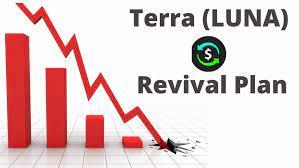
Updated Terra Revival Plan Gets Significant Help From LUNA Holders
Terra Founder Do Kwon set up the Terra revival plan as Terra clients began deciding on the revival proposal today. The "updated and final" revival plan was posted at 7:17 pm Hong Kong time and saw a significant majority vote in favor of the proposal. Be that as it may, a preliminary vote was dismissed overwhelmingly margin.
As the crypto markets battle to recuperate, Terra clients are still having a difficult time about their subsequent stages and how to push ahead from the new debacle. Do Kwon, on his part, is hard grinding away to resuscitate Terra while also keeping the local area happy. Do Kwon's latest proposal, which could lead to a significant change for Terra, has gotten some help early on.
At the point when the de-pegging of TerraUSD happened, leading to significant misfortunes for financial backers, there was a lack of reaction from developers of the convention. Do Kwon finally concocted an initial revival plan, yet that didn't get an enthusiastic reaction from the larger local area.
The Original Recuperation Plan
An initial recuperation plan shared by Do Kwon, which was given last week, proposed a hard fork, parting Terra into two camps. One camp was the client centric Terra Classic, while the other was the developer-centric Terra 2.0. The previous would replace LUNA with another token, LUNC, keeping the algorithmic stablecoin model, while Terra 2.0 would use LUNA. The preliminary decision in favor of the original revival plan shared by Do Kwon indicated that nearly 92% of the votes were against the initial recuperation plan.
Updated Recuperation Plan
The people group was clearly not in favor of hard forking the Terra chain, with a client generated survey seeing overpowering resistance to the idea of a hard fork. Standing by listening to the local area, Do Kwon made significant changes to the initial proposal, which appears to have gotten the local area ready.
As surveying began for the updated proposal, early democratic numbers have indicated overpowering help, with 91% of the votes up to this point approving the plan. At the hour of composing, a mind-boggling 115,888,680 or nearly 80% of the local area has casted a ballot in favor of the proposal, while just 0.35% of the local area has casted a ballot against it, while 20% have casted a ballot as "no with a veto."
Critics of the original revival plan stated that the hard fork proposed in it by Do Kwon was unnecessary, recommending instead that the LUNA supply ought to be diminished by token consuming. On the off chance that the updated plan is approved, we could see the launch of the revamped Terra networks by the 27th of May.
#CoinDCXPathbreaker
0 notes
Text
LUNA pumps and dumps over and again in end of the week’s thrill ride run
A very short fast fact on TERRA LUNA and the things happening around the world.
The cost of LUNA, the local badge of Terra, is presently just about as unstable as low-cap image monetary standards, and is right now at 23,716.5% from its untouched low set.
Quick realities
The Terra network experienced a significant implosion last week, as its UST lost its stake to the U.S. dollar, while the organization bungled the endeavor to save the algorithmic stablecoin by efficiently manufacturing LUNA.
UST is an algorithmic stablecoin fixed to the U.S. dollar whose worth should be kept up with by LUNA as insurance.
Algorithmic stablecoin TerraUSD (UST) has not recovered its stake, exchanging at US$0.1766 at press time.
Network engineer Do Kwan presented an arrangement on resuscitate LUNA on Saturday, recommending reconstituting the organization and resetting proprietorship at 1 billion tokens to be dispersed among current and previous holders.
Binance CEO Changpeng “CZ” Zhao tweeted in answer that this plan wouldn’t work, referring to it as “living in fantasy land.”
Ethereum fellow benefactor Vitalik Buterin tweeted that “algostable,” a term used to depict algorithmic stablecoins, “has turned into a publicity term effectively legitimizing uncollateralized stables by placing them in similar container as collateralized stables like RAI/DAI.”
#CoinDCXPathbreaker
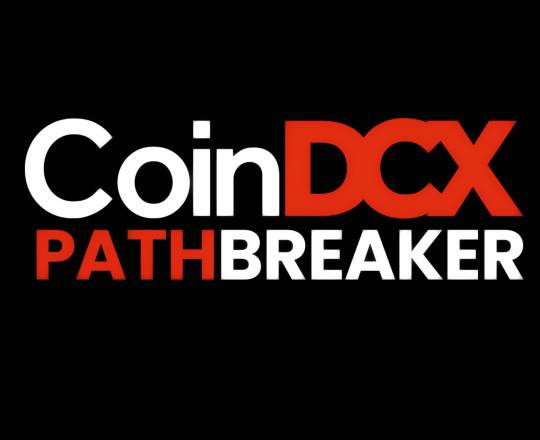
#crypto news#cryptocurrency#luna terra#crypto#crypto latest news#blockchain#cryptocurrencies#coindcx
0 notes
Text

The Luna Foundation Guard Purportedly Sent 52k Bitcoin to Gemini and 28k to Binance to Attempt Balance out UST’s Stake
Synopsis:
The crypto local area has started exploring the progression of the Luna Foundation Guard’s Bitcoin saves during USTs depegging occasion
2. As per one investigation, 52k Bitcoin was shipped off Gemini and another 28k to Binance, yet it isn’t clear in the event that the resources were sold
3. One more investigation by CryptoQuant states that 37k BTC moved from the LFG wallet to Gemini, however there was no critical addition in exchange volume
Bitcoin saves held by the Luna Foundation Guard (LFG) have been the subject of hypothesis concerning where all that BTC went during the depegging of UST.
As indicated by crypto-twitter local area part Luke Martin, the Luna Foundation Guard moved 52k Bitcoin to Gemini and another 28k BTC to Binance during a time of a couple of hours. Mr. Martin was answering a previous Tweet by CZ addressing what befell all the Bitcoin that the Luna Foundation Guard possessed and whether it was utilized as planned as a save for UST.
It isn’t Certain If the Luna Foundation Guard Sold the Bitcoin.
Mr. Martin was citing an investigation done by the group at Elliptic.co, which featured that the exchanges of Bitcoin by the LFG began the morning of May ninth. The main exchange by the LFG was worth 22,189 BTC and was shipped off another location. Later on, one more 30k BTC was sent from other LFG wallets to a similar location. In practically no time, 52,189 BTC was shipped off a solitary record at Gemini. On May tenth, a different 28,205 BTC was shipped off Binance.
The report additionally explained that it was ‘impractical to follow the resources further or recognize whether they were offered to help the UST cost.’
37k Bitcoin had Been Advanced to Market Creators on May 9th
Essentially, the group at CryptoQuant had explored the development of the LFG’s Bitcoin and inferred that 37k Bitcoin moved into Gemini on May 9th.
Anyway a day sooner, a comparative sum had passed on Gemini to different trades. The store on May ninth on Gemini didn’t cause a critical augmentation in that frame of mind on Gemini, however it proceeded to soar in different trades.
The 37k Bitcoin referenced above had been lent to advertise producers to endeavor to balance out USTs stake. The Luna Foundation Guard had felt free to alarm the crypto local area on the development of the 37k Bitcoin through the accompanying tweet.
Do Kwon Had Demonstrated that Terra Will Delivery Documentation on the Development of LFG’s Bitcoin
As prior referenced, the development of the LFG’s Bitcoin holds has been the subject of theory throughout the previous few days. Subsequently, Do Kwon had mentioned persistence in archiving the development of the assets during this trying period for the group at Terra. He said:
“We are currently working on documenting the use of the LFG BTC reserves during the de-pegging event. Please be patient with us as our teams are juggling multiple tasks at the same time.”
#CoinDCXPathbreaker
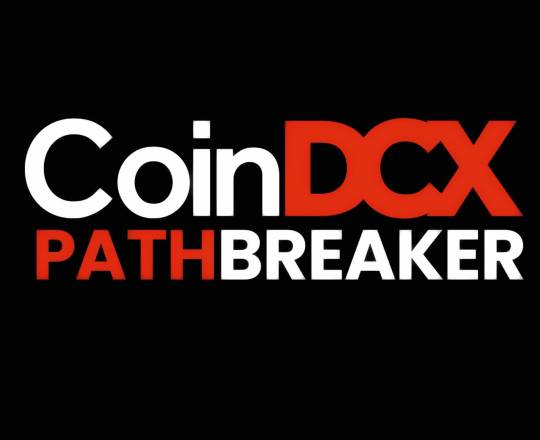
#crypto news#crypto latest news#cryptocurrency#crypto#luna terra#bitcoin#binance#gemini#blockchain#coindcx
0 notes
Text

How Terra's UST and LUNA Collapsed
Indeed, even as the whole crypto market failed, the greatest story was the double collapse of Terra's UST and LUNA. This occurred.
In the midst of the most insane week in crypto ever, the breakdown of Terra's UST stablecoin and governance token LUNA arose as the greatest story. In the midst of the accident, LUNA, previously a main 10 coin by market cap, fell 100 percent to part of a negligible portion of a penny, and UST, intended to remain fixed at $1, reached as far down as possible at 13 pennies.
So what in the world occurred? Get your beverage, certainly you will require that.
There were a few powers at work. The first is the system behind Terra and its stablecoin. The second was general frenzy. Numerous financial backers — who might have been completely uninformed about precisely why the stablecoin was dropping — raced to the exit at the main whiff of a depegging.
Unscrambling DeFi, Anchor Convention, Terra's exorbitant premium investment account, has been consistently diminishing the rates it offers holders for saving UST.
What started at 20% and had been advertised as "stable," consistently started to drop following the death of Proposition 20 back in Spring. That's what this proposition intended assuming Anchor's stores expanded by 5%, the loan fee would increment. Assuming that these stores diminished by 5%, the loan cost would likewise diminish.
Additionally, this rate was supposed to persistently drop 1.5 rate focuses every month assuming there were a bigger number of loan specialists than borrowers on the stage (which there have been by and large).
With loan fees expected to fall, UST's main use case started to falter. On April 23, for instance, over 72% of all UST available for use was secured in Anchor. Essentially the whole justification behind this stablecoin was to get stored in Anchor.
When obviously that 20% interest won't stand the test of time, UST holders started to leave.
On Friday, May 6, there was approximately 14 billion UST in Anchor. By Sunday, this figure was 11.7 billion. Keep in mind, UST was still essentially fixed to the dollar by then, and that implies generally $2.3 billion in capital took off throughout last end of the week.
What's more, since we realize that UST holders were just intrigued by the Terra network due to Moor, their takeoffs implied they had no further need for that UST.
Along these lines, they had a mass exit.
To exit UST, we have two choices.
Choice one is Terra's (in)famous consume and-mint component.
This component allows holders to trade 1 UST for $1 of LUNA, annihilating the UST simultaneously. This sets out an exchange freedom at whatever point 1 UST falls underneath $1, as examiners can purchase the limited UST and exchange it for $1 in LUNA, creating a little gain. The inverse is likewise obvious: Assuming UST exchanges above $1, you can trade (and consume) $1 of LUNA for that UST.

Choice two is going to the stablecoin trade Curve Money.
Commonly, when a stablecoin faces a minor cost change, clever arbitragers will go to DeFi's most profound liquidity pools on Curve and exchange the limited stablecoin to whichever option has held its stake.
For instance, assuming that DAI is exchanging at $0.99, financial backers will purchase the limited DAI and sell it for USDC (which, in this theoretical, is $1) to pack a benefit. That purchase pressure typically pushes the cost of DAI back up to $1. This is valid for UST, as well.
That is the lay of the land. Presently we should unload how this separated so severely for UST.
To start with, the consume and-mint exit. The graph beneath presents an unmistakable suggestion of the abrupt interest by means of this exit. The stockpile of UST cratered as it was singed, while the inventory of LUNA mooned.
This was anything but a torment free exit either, as clients were met with an assortment of specialized issues.
Keep in mind, Terra is as yet a blockchain organization and experiences gas expenses for movement. Alongside higher gas expenses than expected, the organization is additionally restricted as far as the amount UST or LUNA can be scorched or printed at a time.
Things were slow and blocked, so trades started stopping withdrawals.
This consume and-mint component can likewise affect the cost of LUNA.
Trading and consuming UST for LUNA implies printing more LUNA, weakening the stock and dropping the cost of this token. Furthermore, as the cost of LUNA drops, at whatever point you trade 1 UST for $1 worth of LUNA, you consistently need increasingly more LUNA to hit that $1 mark (and that implies printing much more LUNA).
At one point, the cost of LUNA could drop so low that there essentially isn't sufficient liquidity to give a departure portal to all that UST coming in. In any case, inclining further toward that in one minute.
With respect to the second leave choice, Curve Money, this is the way that looked.
UST depegged by somewhat less than $0.02 throughout the end of the week as Anchor departees dipped in and started flipping UST for some other stablecoin, be it Tether's USDT or Circle's USDC.
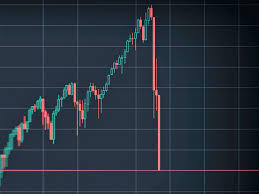
At last, the particular pool that took into account these exchanges (called the "UST + 3Crv" pool, which likewise pools all the major stablecoins) ended up being unequal, importance there was undeniably more UST than the other stablecoins in the pool.
How about we stop and momentarily make sense of what's going on when you sell UST for USDC on Curve.
On the off chance that you sell UST for USDC on Curve, you will add more UST to this pool and eliminate USDC. In the long run, the pool will have more UST than USDC. To address course, the pool then, at that point, starts to offer that UST for a rebate in order to get arbitragers to make the contrary exchange (and rebalance the pool).
This is to some extent why we started to see a slight depegging starting toward the end of the week — Curve doing Curve has been doing since its creation.
The issue in this particular case was that the contrary exchange, the one that would rebalance the pool, wasn't occurring. It created the impression that, regardless of the somewhat rewarding exchange, nobody needed to hold UST. With respect to why, indeed, remember Terra's top application — Anchor — had started to fall apart.
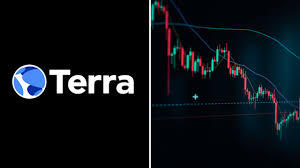
Furthermore, right now, no less than one financial backer unloaded in excess of 85 million UST tokens in return for 84.5 million USDC tokens in this pool. This, obviously, put considerably more squeeze on UST's dollar stake as Curve kept on making the rebate wanting to boost exchange dealers to rebalance the pool. Also, down you go.
Before long, everybody on the web was watching UST lose its stake and LUNA plunge in cost.
What was just a $0.02 depeg on Sunday turned into an astounding $0.32 by Tuesday. Simultaneously, the $64 LUNA token fell beneath $30.
It was additionally around this point that the market capitalization of UST edged toward overwhelming Luna's, which would mean the last option would as of now not have the option to retain the previous, making a passing winding.
Normally, the Luna Foundation Guard (LFG) stepped in.

It unloaded a huge load of UST (roughly $216 million from Bounce Capital, whose president is additionally on the LFG Committee) into the Curve pool to help the stablecoin track down its stake. It then, at that point, apparently started sending the Bitcoin property that it's been accumulating to a "proficient market creator" who was basically told to spend BTC when UST is underneath the stake (as well as the other way around assuming it at any point exchanges over the stake).
Also, UST hopped from $0.64 back to $0.93.
Sadly, it was a concise respite. Exits through Curve ate through the bailout liquidity. It's likewise indistinct whether that BTC was at any point really used to shield the stake.
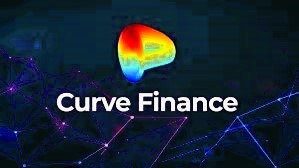
At last, LUNA's value kept on falling as people dumped UST and afterward sold their LUNA until, in the long run, LUNA's cost was low to the point that there wasn't sufficient runway for UST, making a huge measure of terrible obligation.
Do Kwon and the Terra people group multiplied down, and opened up the amount LUNA can be printed at a time. Be that as it may, this did was speed up the winding. On May 8, LUNA had a 343 million coursing supply. By May 12, that figure had swelled to 32.3 billion (and then some).
Regardless of the negative criticism circle, the Terra people group proposed three more crisis activities, which reduce to just lighting however much UST ablaze as could reasonably be expected (without stamping LUNA on the opposite end).
The end result? Another algorithmic stablecoin fails miserably.
#CoinDCXPathbreaker
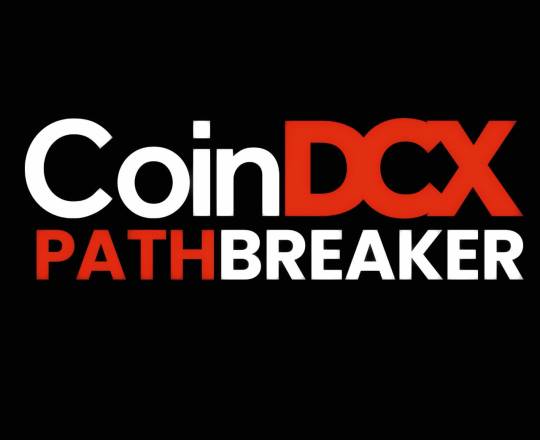
0 notes
Text

Indian Exchanges Delist Crypto LUNA After 100% Loss.
Indian crypto trades, for example, WazirX and CoinDCX have begun delisting overwhelmed token Terra (Luna) after almost 100 percent fall in the advanced resource in just under seven days.
Luna, which was citing around $80 level till last Saturday was exchanging at $0.00002446 level on Friday evening, showing a close to 100 percent fall in its worth. The market capitalization of the token drooped from around $30 billion to around $6 million during this period.
In a notice on Friday morning, WazirX, which is crypto stage with regards to exchanging volume, said that it will delist Luna/USDT, Luna/INR, and Luna/WRX matches. "We will empower Binance free exchange for clients to pull out their Luna reserves," the trade added. USDT is stablecoin tie and WRX is WazirX's utility token.
This came after WazirX's parent Binance on Thursday said that it will delist Luna/USDT contracts as the cost drooped underneath the $0.005 level.
Another crypto trade, CoinDCX, said that it was delisting UST and Luna from CoinDCX application with quick impact. UST or terraUSD, which is an algorithmic stablecoin, is a sister badge of Luna.

"Sympathetically note that clients can keep on exchanging the above resources utilizing other exchanging matches accessible on CoinDCX Master and CoinDCX Web Stage," said CoinDCX, which is India's most elevated esteemed crypto trade.
In the interim, trades BuyUcoin and Unocoin have additionally ended exchanging Luna. Remarkably, the token is as yet exchanging on Bitbns, while terraUSD (UST) isn't recorded on the stage.
The Terra blockchain was ended on Thursday after its token terra (Luna) fell in worth to under 2 pennies in spite of exchanging at about $80 multi week prior.
Luna's destruction began once again the end of the week when its sister token UST, which is a stablecoin, de-fixed from its $1 esteem after large financial backers began unloading a great many dollars of UST over the course of the end of the week.
A stablecoin is generally connected to a basic resource like the US dollar or a valuable metal like gold. TerraUSD is a decentralized algorithmic stablecoin, meaning instead of being supported by a resource, UST utilizes complex codes to make new coins or annihilate old ones to keep a consistent cost at $1.

All stablecoins have an administration token, which gives the steadiness. On account of UST, it is Luna, which makes sense of the connection between's both the tokens.
Be that as it may, due the new fall in the in general crypto market, UST neglected to balance out and hit a low of $ 0.0449 on Friday morning. The makers of Terra endeavored to balance out the token, however have bombed in their endeavors.
UST market capitalization tumbled from more than $18 billion to under $2 billion since last Saturday.
"The ongoing Luna disaster is an extraordinary learning a potential open door for the worldwide crypto local area as it has uncovered the points of failure inside the calculation based stablecoin environment. It is critical to take note of that Terra network is one of the most well informed in the crypto industry and Terra UST is a trailblazer in the algo-based stablecoin race. The LUNA emergency repeats the way that crypto as a resource is profoundly unstable and financial backers need to exchange with alert with a drawn out skyline of 2-3 years to remain beneficial," said Charles Tan, head marketing official at Atato, an authorized Multi-Party Computation(MPC) crypto custodian wallet.
#CoinDCXPathbreaker
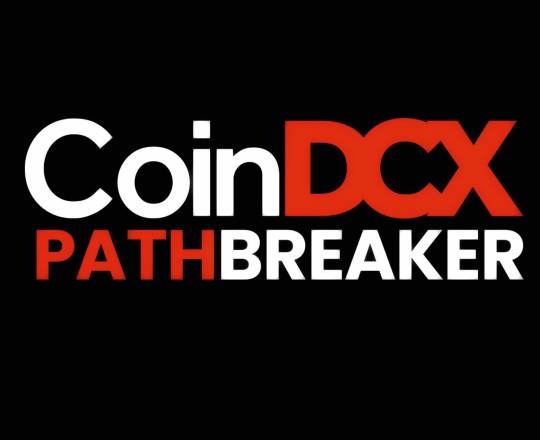
0 notes
Text

Terra's Crypto Implosion Was Unavoidable
In North London half a month prior, a modest bunch of humble yet strikingly knowing retail cryptocurrency financial backers anticipated that terra and luna would crash. A few of them were laughing at terra, or UST, a stablecoin whose value identicalness to the dollar is supported by calculations and game hypothesis instead of money or guarantee, and at the idea that it would keep up with its stake over the long haul.
The "Ponzinomics" of the venture, they informed me, were just excessively hazardous. Only one of the financial backers appeared to be hopeful, out of skepticism instead of trust in terra's robustness. He expressed that eventually UST's cost would develop well over one dollar for each unit, and the coin's advertisers would choose to just keep it there and rebrand the stablecoin as an "inflation-resistant cryptocurrency dollar." One more shrugged yet yielded that all wagers were off. "Up until this point," he said, "this story has generally followed the most entertaining course of events."
You can wager a many individuals don't want to snicker today. UST has lost its stake to the dollar (at the hour of composing, you can get it on cryptocurrency trades for $0.58), and its sister resource luna has dove from $82 last week to $0.02. A major piece of the speculation of around $60 billion in these cryptocurrencies was pummeled for the time being, and a greater amount of it will follow as individuals scramble to dispose of their lessened coins.

In the interim this week, the more extensive crypto market is in disturbance as bitcoin tumbled to $27,000 subsequent to draining 8% of its worth in 24 hours, and numerous other cryptocurrencies are following its plunge. Tie, the world's biggest stablecoin, dropped under $1 on Thursday.
With terra, we are seeing the disintegrating of an undertaking predicated on the thought that you can make cash — and allot it a particular worth — assuming individuals will oblige the misrepresentation that cash has the worth that crypto organizations appoint it, much the same as pretending in a computer game.
A little subsection of hardline crypto devotees would counter that in the time of post-best quality level government issued currency, most monetary standards are for sure just an aggregate fancy. Yet, the way that there is no administration, national bank, economy, or real use supporting terra matters. As Blunt Muci, an approach individual at the London School of Financial aspects' Development Lab Exploration Coordinated effort, puts it, "It is like a bank run, aside from it's a sudden spike in demand for nothing."
UST was marketed to general society as a stablecoin, a kind of cryptocurrency whose worth apparently stays consistent over the long run, making an advantageous fence against the wild value changes of other cryptocurrencies like bitcoin or ether. With most stablecoins, that soundness is ensured by cash holds — whoever makes a stablecoin fixed against the dollar ought to hypothetically keep a comparable measure of dollars in a vault some place — or other insurance, including crypto. But UST is an "algorithmic stablecoin" and has no part of that. It is completely protected from this present reality, and invests heavily in it.
All alone blockchain, UST has a harmonious relationship with its satellite resource luna, which can be utilized to acquire cryptocurrency rewards. It was generally conceivable to trade UST for luna as well as the other way around, and the blockchain's own code generally ensured that terra exchanged at a dollar a unit, while luna's shifting still up in the air by calculations watching out for the market.
That should keep its cost stable by piggybacking on crafted by arbitragers, financial backers who endeavor to benefit from market failures. On the off chance that an auction of UST on cryptocurrency trades took steps to bring down its cost beneath $1, the thought was that shrewd arbitragers would race to purchase UST, and use them on its local blockchain to purchase luna at a markdown — setting up UST's cost all the while.

On the off chance that the inverse occurred and UST's cost zoomed more than $1 on crypto marketplaces, individuals would utilize their lunas to get one-dollar-a-unit USTs on Terra's blockchain and exchange them on different stages, bringing the cost of UST down. It is a cunning design. Likewise one didn't and couldn't work. "It is a cycle like unending movement machines. Individuals needed to sort out some way to get free energy. Furthermore, these plans were convoluted — they would have pulleys, they would have magnets, they would have switches," Muci says. "With algorithmic stable coins, it's somewhat a similar thought."
Ryan Clements, an associate teacher in business regulation and guideline at the College of Calgary, made the issues with this approach clear last year, in a paper gave to algorithmic stablecoins named "Built to Fail." One of the fundamental issues with these stablecoins, Clements made sense of in the paper, is that they can work inasmuch as there is interest for them; generally that multitude of motivations amount to nothing. "UST was never steady regardless and was rarely completely collateralized," Clements says. "It required an interminable dependence on a supposition that there would be sufficient (progressing) interest in the different use instances of UST in the Terra environment."
Numerous crypto financial backers began tracking down their direction to the entryway. Bobby Ong, fellow benefactor of cryptocurrency investigation stage CoinGecko, says that one potential clarification for what befell UST is "a George Soros-style" assault, after the Hungarian humanitarian and lender's renowned bet against the English pound in 1992. As per this hypothesis, UST's ruinous fall — what began on Monday and spiraled into a disaster on Wednesday — was hastened by a huge substance unloading billions of UST on the market, breaking its stake. Another, more straightforward clarification is that UST was just not sustainable, and this was continuously going to occur when the market's feeling changed.
It is telling that some crypto characters are laying the fault for the alleged assault at the entryway of speculation the executives organization BlackRock and mutual funds Stronghold. Just a long time back, Fortification had previously been given a role as the miscreant in another monetary frenzy, the alleged GameStop adventure — when a huge number of retail financial backers began purchasing the load of the feeble game store chain by the thousand, notwithstanding its questionable basics, in an odd demonstration of resistance against conventional money. A few eyewitnesses in those days had shown respect for the ascent of image finance, where the worth of resources was not generally founded on a business' possibilities and on still up in the air by aggregate hallucinations, performative contrarianism, and sheer agnosticism ("Is [GameStop's stock] worth 200+ dollars? That is for you to choose in view of your own worth framework," one financial backer remarked on Reddit, where the resistance initially arose.)

Terra's ascent and fall is, as it were, the final stage of that extended length of peculiar money. It probably won't recuperate, and on second thought continue directly following other Web3 slumps, for example, the blasting of the NFT bubble or the fall of a lot of image stocks and canine coins.
However, it would be pretentious to peruse this from the perspective of absurdism and unrealistic fantasies. Terra's blast in prevalence throughout the course of recent months was additionally determined by marvelous motivation plans. "The enormous interest for UST was driven due to a reserve funds convention called Anchor on Terra's blockchain, which guaranteed 20% in yearly rate yield," Ong says. Individuals would purchase UST and stash it in Anchor, a piece of programming where one could stop one's coins, expecting to see it develop like an enchanted cash tree over the long haul. What's really stressing, Ong says, is that Terra set a model for some other crypto projects, which likewise began promising ridiculous returns and presently are at not kidding chance of crashing.
The Ponzinomics were just excessively self-evident: When you pay cash in vain, and stash your nothing in a convention with the assumption that it will give you a 20 percent yield — all you end up with is 20% of nothing.
#CoinDCXPathbreaker
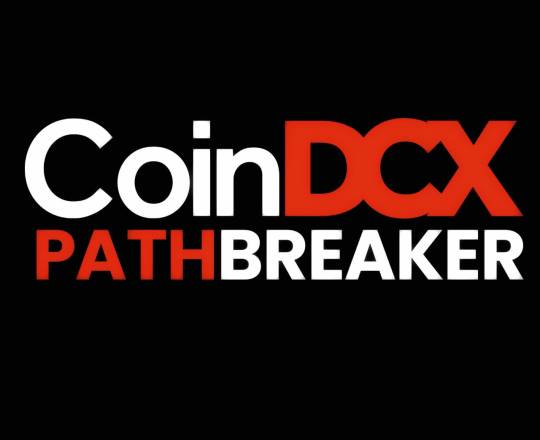
0 notes
Text

What Is a Liquidity Pool?
Liquidity pools will be pools of tokens secured in shrewd agreements that give liquidity in decentralized exchanges trying to constrict the issues brought about by the illiquidity regular of such frameworks. Liquidity pools are additionally the name given to the convergence of orders which make cost levels that — once came to — see the resource choose whether to keep on moving in upswing or downtrend.
The decentralized exchanges that influence liquidity pools are the very that utilize robotized market creator based frameworks. On such exchanging stages, the conventional request book is supplanted by pre-subsidized on-chain liquidity pools for both the resources of the exchanging pair.
The upside of utilizing liquidity pools is that it doesn't need a purchaser and a vender to choose to exchange two resources at a given cost, and on second thought use a pre-subsidized liquidity pool. This takes into account exchanges to occur with restricted slippage in any event, for the most illiquid exchanging matches, for however long there is an adequately large liquidity pool.
The assets held in the liquidity pools are given by different clients who likewise procure recurring, automated revenue on their store through exchanging charges in light of the level of the liquidity pool that they give.
Quite possibly the earliest decentralized exchange to present such a framework was Ethereum-based exchanging framework Bancor, however was broadly taken on in the space after Uniswap advocated them.
Where Could You at any point Give Liquidity?
Whenever the vast majority contemplate liquidity, they ponder the sort of liquidity that is utilized to work with trades on decentralized exchanges. All things considered, most of liquidity suppliers just contribute liquidity to AMMs, and by far most of all digital currency liquidity in presence is utilized to control these stages.

In any case, DEXes aren't the main spots people can contribute liquidity to. As the decentralized finance (DeFi) scene has extended in intricacy and assortment, a scope of once incorporated benefits presently has decentralized counterparts — large numbers of which permit clients to contribute liquidity to assist with activities. Here are a portion of different kinds of stages clients can regularly give liquidity to:
Open lending protocols: Decentralized lending protocols like Compound and Aave have seen emotional development lately, and reliably rank among the most famous DeFi protocols on upheld chains. These are principally controlled by client contributed liquidity pools, which are utilized to finance collateralized credits. Generally speaking, liquidity suppliers procure a corresponding part of the loan fee paid by borrowers, and at times likewise acquire extra compensations as administration tokens.

DAOs: As decentralized autonomous organizations fill in fame, so too has their requirement for admittance to moment capital — which could then be utilized to support acquisitions for the DAO, pay for tasks and that's only the tip of the iceberg. Along these lines, an enormous number of DAOs presently have a local area supported depository, which is filled by local area individuals. As a rule, those that give liquidity to the depository can pull out their assets at whatever point they pick and will acquire compensations for the period in which they contributed.

Decentralized protection protocols: As DeFi has filled in ubiquity, so too has the requirement for clients to safeguard themselves against hacks, burglaries and other surprising occasions. Another scope of DeFi protection stages currently permit clients to take out inclusion plans against determined occasions, and generally utilize pooled liquidity from purported "protection financiers". These assets might be utilized to pay out any effective inclusion cases and liquidity suppliers acquire their fair piece of the insurance installment (and possibly extra administration token prizes).

Decentralized spans: A developing number of cross-anchor spans permit clients to contribute liquidity to pools on at least one chains to assist with working with consistent and quick token exchanges across chains. As a trade-off for contributing liquidity, LPs typically get a small portion of the 'cross-chain charge' — that is, the expense that span clients pay for moving their resource starting with one chain then onto the next, as a rule somewhere near 0.05% to 0.1% of the exchange size.
For what reason Truly do Individuals Give Liquidity?
Liquidity arrangement is turning into an extraordinarily well known action in the DeFi space and probably the most famous decentralized exchanges can have a huge number of liquidity suppliers alone. By and large, there are logical some place in excess of 100,000 interesting particular DeFi liquidity suppliers worldwide.

As a rule, most liquidity suppliers are searching for a certain something — benefit. Contingent upon the pool they add to and the stage they take an interest on, it tends to be feasible to acquire anyplace from barely anything up to well more than 100 percent APY. Without a doubt, as indicated by information from APY.vision, the most productive pools have created over 1,000% APY for members since their initiation, while even less famous pools can give bank-beating yields.
Generally speaking, by far most of individuals give liquidity in the assumption that they will procure a fair yield on their store — whether this is as liquidity charges, cultivating yields, or administration token prizes. In a little part of cases, clients may just give liquidity to assist with supporting their #1 activities, since expanded liquidity assists with shielding the task token against wild cost developments while permitting new clients to acquire openness to new coins/tokens without experiencing abundance slippage.
How Might You at any point Manage LP Tokens?
As we momentarily addressed, LP tokens are fundamentally used to address a singular's stake in a specific liquidity pool. Accordingly, they can be held until the singular requirements to recover their stored resources alongside any collected benefits (or completed misfortunes), so, all in all they can return them to the stage, which will consume them and return their resources.

In any case, that is not everything they can be utilized for. Here, we investigate a few different purposes for LP tokens.
Moving between people: LP tokens address responsibility for tokens secured in a related liquidity pool. Anyone who holds these LP tokens can accordingly be viewed as the proprietor of these tokens. Along these lines, LP tokens can be basically moved between people, permitting the beneficiary to guarantee the tokens at whatever point they pick and gain any benefits they create. Sometimes, it tends to be more gas effective to send LP tokens instead of the hidden tokens to the beneficiary — especially assuming the beneficiary intended to add to a similar pool subsequent to getting the assets.
Utilized for yield cultivating (or liquidity mining): Yield cultivating is indeed the most well known utilization of LP tokens. This involves marking LP tokens in at least one yield ranches to acquire an extra cause of yield in an optional token. SushiSwap, for instance, permits clients to stake their SushiSwap LP tokens to acquire extra compensations as SUSHI.
Take a credit against them: A developing number of decentralized lending protocols are starting to permit clients to involve their LP tokens as guarantee for an advance. This permits clients to keep procuring compensations on their LP tokens, while having the option to separate capital from their possessions without expecting to sell their basic LP tokens. Abracadabra.money and 1Pool Finance are two such stages that offer this usefulness. All things considered, clients need to consider the open door cost of doing this since they can never again involve these LP tokens for yield cultivating.
Consume them: sometimes, project proprietors who have given liquidity to their tokens can select to 'consume' their related LP tokens. This involves physically sending their LP tokens to a known 'consume address', delivering them hopeless. Doing this guarantees that the token will continuously have at any rate some liquidity, and is normally utilized as a guard against 'floor covering pulls'.
What Are the Dangers Implied?
When performed accurately and utilizing a gamble opposed technique, liquidity arrangement can give a somewhat rewarding and dependable income stream for members.
In any case, it's not without its reasonable portion of dangers. Boss among these is the gamble of hacks. As DeFi protocols fill in take-up and their TVLs grow, they are progressively focused on by programmers who will endeavor to take advantage of the convention to snatch client reserves.
Tragically, this is generally ordinary in 2022, and scarcely a month goes by without somewhere around one DeFi convention losing a huge number of dollars in a hack. However there are presently an assortment of decentralized protection choices accessible as a rule, these are elective, and not many liquidity suppliers take out an arrangement before it's past the point of no return.

Fleeting misfortunes (ILs) are another frequently ignored risk. This is essentially the misfortunes that a client can confront assuming the worth of their liquidity drops falls beneath what it would have been worth on the off chance that the client basically held their tokens without giving them as liquidity. ILs can frequently be counterbalanced on the off chance that the yields from exchange expense income are sufficiently adequate, however this isn't generally the situation, and numerous liquidity suppliers neglect to consider this while computing their yields.
Ultimately, there's the gamble of token breakdown. This can happen when one (or both) tokens in a decentralized liquidity pool lose most of its worth, which can prompt sensational misfortunes for the liquidity supplier — owed to the steady item recipe utilized by most mechanized market producers. This most normally happens when something like one side of the liquidity pool is a profoundly unpredictable token, which experiences an unexpected decrease in esteem. Luckily, this is somewhat intriguing and most liquidity suppliers won't ever encounter a total token breakdown occasion.
#CoinDCXPathbreaker
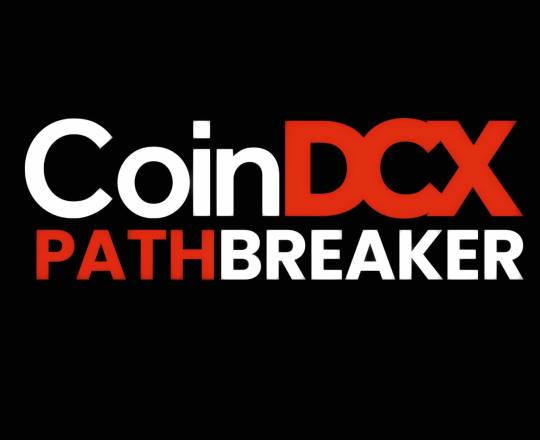
0 notes
Text

NFT Market Valuation to Ascend to More than $13 Billion by 2027
IN SHORT 1. Another MarketsandMarkets report predicts that the NFT market would develop into a $13.6 billion industry by 2027.
2. The report anticipated that Asia would have the most elevated development rate inside the estimated period.
3. An alternate report from Nansen says NFT market would develop into $80 billion by 2025.
The non-fungible token (NFT) area can possibly be worth more than $13 billion toward the finish of 2027, as indicated by a report from research firm MarketsandMarkets.
"Non-Fungible Tokens Market by Offering Business Technique Plan, NFT Creation, and The board, NFT Stage - Commercial center, End-client like Media and Diversion, Gaming, Locales that are Americas, Europe, MEA, APAC - Worldwide conjecture to 2027," the firm expressed that market size could increment altogether in a couple of years assuming the premium among financial backers keeps on developing.
As per the examination firm, the NFT spaces' current $3 billion valuation will reach $13.6 billion in light of the Build Yearly Development Rate (CAGR) of 35.0%.
Factors answerable for the development
The exploration firm recognized three principal factors vital for the proceeded with development of the NFT area. Per the report, the development of the gaming local area close by works of standard forces to be reckoned with and the interest for advanced fine arts would assist with pushing the space higher than ever.
MarketsandMarkets noticed that these three elements have assisted the area with accomplishing standard status over the most recent two years, particularly as superstars' expanded reception of NFTs has supported its allure.
Notwithstanding, the firm noticed that the accompanying elements would likewise assist with helping the development of the space. This incorporates more up to date use cases in design, retail, and store network the board.
Asia is supposed to have the most elevated development in NFTs reception
While America as of now has the biggest portion of the overall industry of the NFT market, Asia is supposed to have the most noteworthy development rate inside the estimate time frame.
The extended development in Asia is because of the premium from Asia Pacific financial backers, as proven in the Google scan patterns for NFT-related themes in the locale. A piece of the report peruses,
APAC nations are arising toward consistent turns of events, and commercial center send-offs in the given market to offer makers and purchasers equivalent chances in the environment.
Different report shows NFT market development
A few reports from different associations have alluded to the proceeded with development of the NFT market.
A new BeinCrypto report uncovered that deals in the business stay solid notwithstanding cases running against the norm by conventional media reports. As per the report, the demise of NFTs has been extraordinarily misrepresented.
A report likewise expressed that the NFT area had outflanked the more extensive crypto market on the year-to-date metric. The blockchain insightful firm anticipated that the valuation of NFTs could ascend to as high as $80 billion by 2025.
#CoinDCXPathbreaker
#cryptocurrency#crypto news#nft#financial market news#crypto#blockchain#coindcx#technology#investors#revenue
0 notes
Text
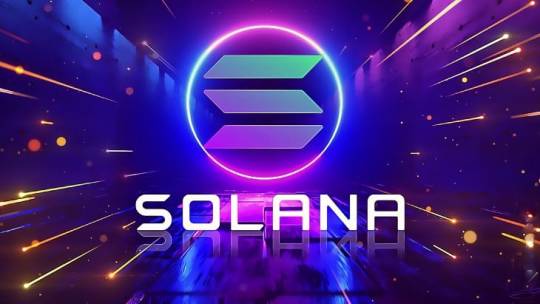
Solana (SOL) Presently Second-Biggest Protocol By Consequential NFT Sales Volume
Solana, the famous open source Blockchain that helps shrewd agreements, has recorded a prominent market execution over the course of the last months. As indicated by information from cryptocurrency investigation stage Messari, Solana's NFT sales volume has brought about it turning into the second-biggest protocol toward the finish of the quarter, while Ethereum took the primary spot.
Solana's NFT market execution
Regardless of the, the instability kept in network use and framework, which surfaced during the end of the quarter, the primary quarter saw the shrewd agreement stage welcome new NFs. The NFT market responded in upsurge, as the volume of sales hit a billion.
The organization's enhancement of TLV across various DeFi applications, for example, the redesigning of the client experience with the Ghost portable wallet, alongside the send off of various applications inside the organization, outside the DeFi space, assumed a monstrous part in Solana's development.
Yet again in any case, the organization additionally saw some pushback, as organization disappointment surfaced. On the second of May, the organization was closure for 8-hours, and was just live, after network validators did a bunch restart. This is one among a few different cases, which have been followed back to extreme organization congestion.
Solana's organization execution is both promising and concerning
Over the last quarter of this current year, Solana has seen a rise in specific measurements. Additionally, a few descending actions have likewise surfaced.
"while market cap and income declined by 30% and 43.5%, separately, the organization experienced proceeded upswings in use, measured by normal dynamic special charge payers (+28.4%), normal exchanges each second (+94.8%), and all out typical day to day exchanges (+4.2%)."
Furthermore, the drop in the age of income reflets the drop-in normal exchange charges, which was at - 44.8%, as the report noted. Income additionally plunged because of the corrupted organization execution. This was followed back to a significant downswing during times of organization congestion.
"Since income declined quicker than market cap, the price- to-sales (P/S) proportion moved vertically, moving from 676x to 991x. Not at all like last quarter, network use kept on developing while monetary execution declined."
#CoinDCXPathbreaker
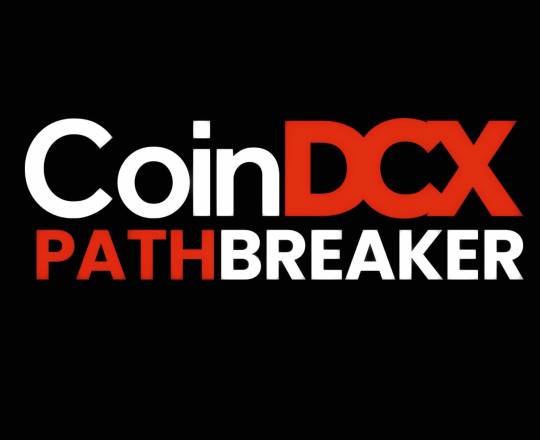
0 notes
Text
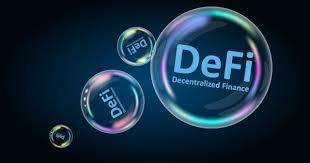
The Power Of DeFi: Scouting Decentralized Finance And Major DeFi Ventures
We're generally watching out for the following huge thing in the "bitcoin" world, and the DeFi protocol has as of late gotten a lot of consideration. Decentralized Finance (DeFi) alludes to an assistance that dispenses with the requirement for a go between while sending cash starting with one area then onto the next. Along these lines, assuming you're keen on getting the hang of all that there is to be aware of the DeFi protocol, keep close by on the grounds that we'll go over everything.
What Precisely Is DeFi? DeFi normally represents Decentralized Finance. As the name suggests, it's a sort of umbrella expression for a monstrous monetary foundation that stresses decentralization. Decentralization, then again, doesn't show up all of a sudden; rather, it is connected to cryptocurrencies, or all the more explicitly, the blockchain innovation that supports them. DeFi's ultimate objective is to decentralize monetary administrations and supplant them with decentralized associations that permit everybody to take part.

Benefits The DeFi development endeavors to furnish clients and financial backers with an assortment of impetuses. The end of mediators, as well as centralized control, are two essential advantages of DeFi. Likewise, it would endeavor to make monetary business sectors more open to institutional financial backers. DeFi likewise grows new venture choices to take the idea higher than ever. DeFi arrangements depend vigorously on the basic qualities related with blockchain innovation to achieve the advantages.

Inconveniences For really investigating DeFi's true capacity, laying out a nonpartisan feeling of its advantages and drawbacks is basic. In truth, by far most of issues and risks associated with a DeFi project are basically because of the innovation in question. To start with, DeFi drives have huge difficulties in the scalability of the host blockchain from an assortment of points. At long last, in DeFi-based applications and blockchain advances, liquidity is obviously significant, which DeFi battles with.

DeFi Advancements: What Decentralized Finance Gives Us? Blockchain innovation, — a disseminated and secure data set or record — which is likewise taken advantage of in cryptocurrencies is utilized in decentralized finance. dApps are the applications that manage exchanges and run the blockchain, and the exchanges are put away in blocks on the blockchain and in this way approved by different clients. In the event that all of the validators settle on an exchange, the square is fixed and encoded, and another square is made containing data from the former square.
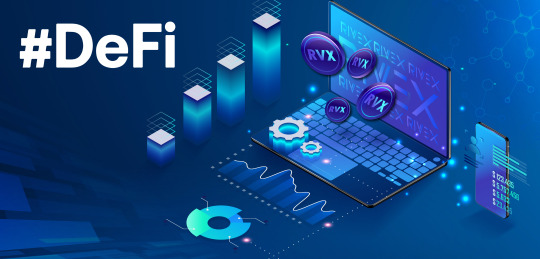
Decentralized Exchanges A decentralized trade, or DEX, is a cryptocurrency trade that works without the utilization of a focal power. Expect you download a DEX application on your telephone and make a little Bitcoin purchase. Your exchange is then safely kept on a common, carefully designed advanced record. The DEX, which is a decentralized distributed network, records every one of such exchanges. Coins can be bought from different clients on a similar stage. Keep your things and participate in trading and marking. All of this should be possible just from your telephone.
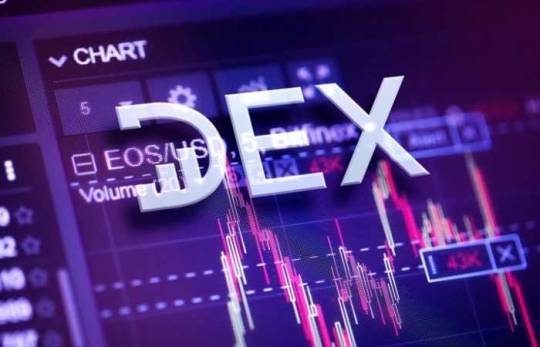
Non-Fungible Tokens (NFTs) With NFTs' capacity to mirror the commercialization of advanced items and administrations, the NFT-decentralized finance combo turns out to be immediately conceivable. NFTs have arisen as one of the most encouraging DeFi applications, with ERC-20 tokens, for instance, laid out by Ethereum to offer some benefit for computerized resources. Therefore, NFTs could undoubtedly act as evidence of computerized craftsmanship proprietorship privileges. Ethereum has rapidly become one of the most well known stages for specialists to exhibit their work and communicate with a dynamic local area of authorities. NFTs could additionally offer noteworthy benefit benefits in the domain of DeFi because of their adaptability in exhibiting proprietorship.
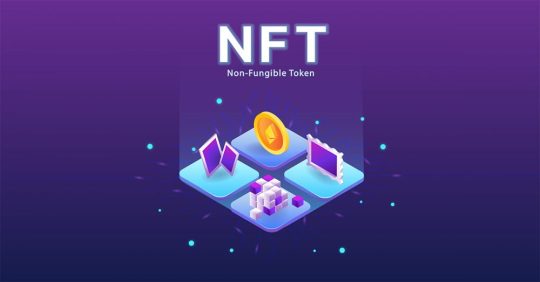
CeFi versus DeFi Centralized Finance stages were among the first in the market to give cryptocurrency exchanging administrations. All exchanges in a centralized substance are led through a focal trade. That is, a solitary focal trade is responsible for all assets. You don't claim a private key that gives you admittance to your wallet assuming you utilize the CeFi stage. DeFi, then again, doesn't require the utilization of an agent (a centralized business) to give crypto exchanging administrations. A decentralized trade (DEX) is shared, and that implies it joins purchasers and merchants straightforwardly without the utilization of an outsider mediator like a bank. On a DeFi trade, all cycles are naturally coordinated, made due, and took care of by brilliant agreements based on the blockchain.
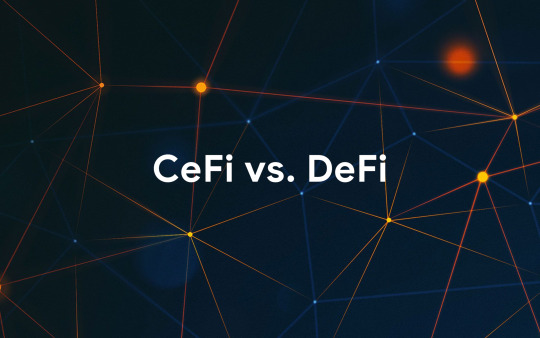
Will DeFi Shut Banks Of Down? Banks are currently endeavoring to enter the DeFi business by giving crypto administrations to their clients. Furthermore, it seems like they are dealing with a Frankenstein's beast. Since they realize individuals will ultimately move totally toward blockchain, they are giving their best for get their cash utilizing different means. All in all, DeFi will, in a couple of years, shut banks of down except if they figure out how to adjust to the new changes.
Key part: Investigating A portion Of The DeFi Activities As the market goes to blockchain and DeFi protocols, a few undertakings seem consistently. The following are a couple of prominent activities that utilization DeFi innovation.
Ethereum DeFi Ethereum is at the core of the extraordinary larger part of DeFi projects available. Other blockchains are as of now feasible for such exercises; for instance, while figuring out what is Dezentralized Finance (DeFi), you might run over projects laid out on different stages. Notwithstanding this, Ethereum keeps on being the unmistakable pioneer.
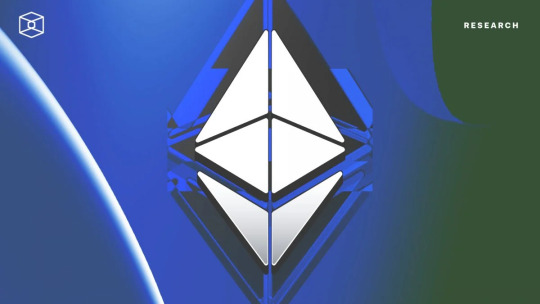
Solana DeFi With north of 423 ventures presently settled on the stage, some of which are central DeFi drives for the future, the Solana biological system is moreover growing by its own doing. For instance, the move of tasks like the FTX trade and the USDC stablecoin to the Solana blockchain, as well as the presentation of NFTs on Solana, which can offer significantly lower printing and exchanging charges, are all essential for the blockchain.
Cardano DeFi Cardano is a framework that produces fast, adaptable, and long haul development. This empowers each Cardano venture to be both modest and quick, as well as to develop with practically no issues. In contrast to ETH, where individuals disapprove of expenses, or BSC, where individuals dislike centralization. Cardano's blockchain gives perhaps the best starting point for any task makers, from finance dApps to gaming to numerous different applications.
Polygon DeFi Polygon was recently known as Matic Organization, and it is a blockchain layer 2 scalability arrangement. Blockchain of Polygon means to tackle each of the issues of the ETH blockchain and whatever other chain that might have a similar issue, considering how extreme and costly it is to be in the ETH domain. You might utilize a multi-chain blockchain with Polygon, which takes into account quicker and less expensive exchanges all over.
Avalanche DeFi Avalanche is a decentralized application and monetary natives stage that is open-source. Its makers desire to direct the business toward decentralized finance and lay new foundation for the business. Avalanche utilizes a heterogeneous organization with numerous validator sets and blockchains to give a similar degree of safety as Ethereum or Bitcoin in a more limited measure of time.
Llama DeFi DeFi Llama is an eminent web asset giving thorough data on various DeFi items. For instance, Llama DeFi gives information on DeFi cryptocurrencies' ongoing cost levels, as well as TVL information for DEXs (decentralized exchanges), loaning protocols, yield cultivating exercises, marking pools, DeFi protection, and an assortment of other DeFi merchandise.
SushiSwap DeFi SushiSwap was portrayed as an "advancement of Uniswap" that included "local area situated highlights" to help the members — particularly a token. While exchanging expenses are parted among LPs in Uniswap, exchanging charges and SUSHI tokens are spread to LPs in SushiSwap. A percentage of the expenses is additionally changed back over completely to SUSHI and conveyed to SUSHI token holders, permitting them to keep getting a portion of the protocol's charges regardless of whether a LP quits giving liquidity. SUSHI is additionally expected to participate in protocol administration.
Aave DeFi Aave is a decentralized currency market administration that permits clients to get cryptocurrencies securely and safely, with variable and consistent financing costs. The Aave project is rapidly laying down a good foundation for itself as a market chief in the DeFi loaning and getting industry. This is on the grounds that, in contrast to different protocols that arrangement with KYC and require long enrollments, Aave liberates clients from these limitations.
Cake DeFi Cake DeFi is a stage that associates the Bitcoin biological system to monetary administrations. This DeFi project permits BTC cryptocurrency holders to partake in the elements generally connected with DeFi applications on Ethereum, Bitcoin's principal rival blockchain (ETH).
Bitcoin And DeFi Albeit a veteran in the space, and a not-really simple to-scale project, Bitcoin can be utilized in DeFi items in two distinct ways. The first is to utilize an enveloped variant of Bitcoin by an unfamiliar blockchain, while the second is to make local brilliant agreements on BTC.
Is Decentralized Finance What's to come?
The development of Decentralized Finance is still in its beginning stages. Be that as it may, the Decentralized Finance (DeFi) development seems to have arrived at early adopter status, and the next years will uncover whether it prevails with regards to crossing the gap into general utilization. There's no rejecting that a decentralized monetary framework can help an enormous fragment of the populace who are at present exposed to monetary segregation, unnecessary expenses, and wasteful cash the executives.
How To put resources into DeFi?
You can rapidly make your most memorable DeFi speculation by getting some crypto on CoinDCX by using one of the numerous moment cryptocurrency trade organizations gave. These upheld offers and trade rates can be generally looked into on the page. Peruse their KYC/AML strategies and local area assessments to stay away from issues. While performing crypto-to-crypto exchanges, try to represent costs. CoinDCX is one of the most secure crypto trade to exchange crypto.
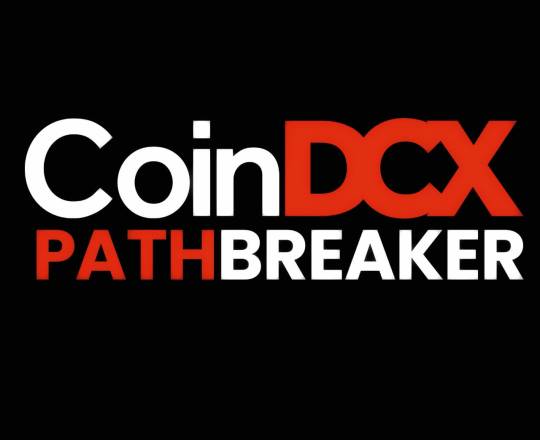
#CoinDCXPathbreaker
3 notes
·
View notes
Text

The Power Of DeFi: Scouting Decentralized Finance And Major DeFi Ventures
We're generally watching out for the following huge thing in the "bitcoin" world, and the DeFi protocol has as of late gotten a lot of consideration. Decentralized Finance (DeFi) alludes to an assistance that dispenses with the requirement for a go between while sending cash starting with one area then onto the next. Along these lines, assuming you're keen on getting the hang of all that there is to be aware of the DeFi protocol, keep close by on the grounds that we'll go over everything.
What Precisely Is DeFi? DeFi normally represents Decentralized Finance. As the name suggests, it's a sort of umbrella expression for a monstrous monetary foundation that stresses decentralization. Decentralization, then again, doesn't show up all of a sudden; rather, it is connected to cryptocurrencies, or all the more explicitly, the blockchain innovation that supports them. DeFi's ultimate objective is to decentralize monetary administrations and supplant them with decentralized associations that permit everybody to take part.

Benefits The DeFi development endeavors to furnish clients and financial backers with an assortment of impetuses. The end of mediators, as well as centralized control, are two essential advantages of DeFi. Likewise, it would endeavor to make monetary business sectors more open to institutional financial backers. DeFi likewise grows new venture choices to take the idea higher than ever. DeFi arrangements depend vigorously on the basic qualities related with blockchain innovation to achieve the advantages.

Inconveniences For really investigating DeFi's true capacity, laying out a nonpartisan feeling of its advantages and drawbacks is basic. In truth, by far most of issues and risks associated with a DeFi project are basically because of the innovation in question. To start with, DeFi drives have huge difficulties in the scalability of the host blockchain from an assortment of points. At long last, in DeFi-based applications and blockchain advances, liquidity is obviously significant, which DeFi battles with.

DeFi Advancements: What Decentralized Finance Gives Us? Blockchain innovation, — a disseminated and secure data set or record — which is likewise taken advantage of in cryptocurrencies is utilized in decentralized finance. dApps are the applications that manage exchanges and run the blockchain, and the exchanges are put away in blocks on the blockchain and in this way approved by different clients. In the event that all of the validators settle on an exchange, the square is fixed and encoded, and another square is made containing data from the former square.

Decentralized Exchanges A decentralized trade, or DEX, is a cryptocurrency trade that works without the utilization of a focal power. Expect you download a DEX application on your telephone and make a little Bitcoin purchase. Your exchange is then safely kept on a common, carefully designed advanced record. The DEX, which is a decentralized distributed network, records every one of such exchanges. Coins can be bought from different clients on a similar stage. Keep your things and participate in trading and marking. All of this should be possible just from your telephone.

Non-Fungible Tokens (NFTs) With NFTs' capacity to mirror the commercialization of advanced items and administrations, the NFT-decentralized finance combo turns out to be immediately conceivable. NFTs have arisen as one of the most encouraging DeFi applications, with ERC-20 tokens, for instance, laid out by Ethereum to offer some benefit for computerized resources. Therefore, NFTs could undoubtedly act as evidence of computerized craftsmanship proprietorship privileges. Ethereum has rapidly become one of the most well known stages for specialists to exhibit their work and communicate with a dynamic local area of authorities. NFTs could additionally offer noteworthy benefit benefits in the domain of DeFi because of their adaptability in exhibiting proprietorship.

CeFi versus DeFi Centralized Finance stages were among the first in the market to give cryptocurrency exchanging administrations. All exchanges in a centralized substance are led through a focal trade. That is, a solitary focal trade is responsible for all assets. You don't claim a private key that gives you admittance to your wallet assuming you utilize the CeFi stage. DeFi, then again, doesn't require the utilization of an agent (a centralized business) to give crypto exchanging administrations. A decentralized trade (DEX) is shared, and that implies it joins purchasers and merchants straightforwardly without the utilization of an outsider mediator like a bank. On a DeFi trade, all cycles are naturally coordinated, made due, and took care of by brilliant agreements based on the blockchain.

Will DeFi Shut Banks Of Down? Banks are currently endeavoring to enter the DeFi business by giving crypto administrations to their clients. Furthermore, it seems like they are dealing with a Frankenstein's beast. Since they realize individuals will ultimately move totally toward blockchain, they are giving their best for get their cash utilizing different means. All in all, DeFi will, in a couple of years, shut banks of down except if they figure out how to adjust to the new changes.
Key part: Investigating A portion Of The DeFi Activities As the market goes to blockchain and DeFi protocols, a few undertakings seem consistently. The following are a couple of prominent activities that utilization DeFi innovation.
Ethereum DeFi Ethereum is at the core of the extraordinary larger part of DeFi projects available. Other blockchains are as of now feasible for such exercises; for instance, while figuring out what is Dezentralized Finance (DeFi), you might run over projects laid out on different stages. Notwithstanding this, Ethereum keeps on being the unmistakable pioneer.

Solana DeFi With north of 423 ventures presently settled on the stage, some of which are central DeFi drives for the future, the Solana biological system is moreover growing by its own doing. For instance, the move of tasks like the FTX trade and the USDC stablecoin to the Solana blockchain, as well as the presentation of NFTs on Solana, which can offer significantly lower printing and exchanging charges, are all essential for the blockchain.
Cardano DeFi Cardano is a framework that produces fast, adaptable, and long haul development. This empowers each Cardano venture to be both modest and quick, as well as to develop with practically no issues. In contrast to ETH, where individuals disapprove of expenses, or BSC, where individuals dislike centralization. Cardano's blockchain gives perhaps the best starting point for any task makers, from finance dApps to gaming to numerous different applications.
Polygon DeFi Polygon was recently known as Matic Organization, and it is a blockchain layer 2 scalability arrangement. Blockchain of Polygon means to tackle each of the issues of the ETH blockchain and whatever other chain that might have a similar issue, considering how extreme and costly it is to be in the ETH domain. You might utilize a multi-chain blockchain with Polygon, which takes into account quicker and less expensive exchanges all over.
Avalanche DeFi Avalanche is a decentralized application and monetary natives stage that is open-source. Its makers desire to direct the business toward decentralized finance and lay new foundation for the business. Avalanche utilizes a heterogeneous organization with numerous validator sets and blockchains to give a similar degree of safety as Ethereum or Bitcoin in a more limited measure of time.
Llama DeFi DeFi Llama is an eminent web asset giving thorough data on various DeFi items. For instance, Llama DeFi gives information on DeFi cryptocurrencies' ongoing cost levels, as well as TVL information for DEXs (decentralized exchanges), loaning protocols, yield cultivating exercises, marking pools, DeFi protection, and an assortment of other DeFi merchandise.
SushiSwap DeFi SushiSwap was portrayed as an "advancement of Uniswap" that included "local area situated highlights" to help the members — particularly a token. While exchanging expenses are parted among LPs in Uniswap, exchanging charges and SUSHI tokens are spread to LPs in SushiSwap. A percentage of the expenses is additionally changed back over completely to SUSHI and conveyed to SUSHI token holders, permitting them to keep getting a portion of the protocol's charges regardless of whether a LP quits giving liquidity. SUSHI is additionally expected to participate in protocol administration.
Aave DeFi Aave is a decentralized currency market administration that permits clients to get cryptocurrencies securely and safely, with variable and consistent financing costs. The Aave project is rapidly laying down a good foundation for itself as a market chief in the DeFi loaning and getting industry. This is on the grounds that, in contrast to different protocols that arrangement with KYC and require long enrollments, Aave liberates clients from these limitations.
Cake DeFi Cake DeFi is a stage that associates the Bitcoin biological system to monetary administrations. This DeFi project permits BTC cryptocurrency holders to partake in the elements generally connected with DeFi applications on Ethereum, Bitcoin's principal rival blockchain (ETH).
Bitcoin And DeFi Albeit a veteran in the space, and a not-really simple to-scale project, Bitcoin can be utilized in DeFi items in two distinct ways. The first is to utilize an enveloped variant of Bitcoin by an unfamiliar blockchain, while the second is to make local brilliant agreements on BTC.
Is Decentralized Finance What's to come?
The development of Decentralized Finance is still in its beginning stages. Be that as it may, the Decentralized Finance (DeFi) development seems to have arrived at early adopter status, and the next years will uncover whether it prevails with regards to crossing the gap into general utilization. There's no rejecting that a decentralized monetary framework can help an enormous fragment of the populace who are at present exposed to monetary segregation, unnecessary expenses, and wasteful cash the executives.
How To put resources into DeFi?
You can rapidly make your most memorable DeFi speculation by getting some crypto on CoinDCX by using one of the numerous moment cryptocurrency trade organizations gave. These upheld offers and trade rates can be generally looked into on the page. Peruse their KYC/AML strategies and local area assessments to stay away from issues. While performing crypto-to-crypto exchanges, try to represent costs. CoinDCX is one of the most secure crypto trade to exchange crypto.

#CoinDCXPathbreaker
#crypto#bitcoin#ethereum#blockchain#solana#avalanche (avax)#cardano#aave#polygonnetwork#crypto latest news#coindcx
3 notes
·
View notes
Text
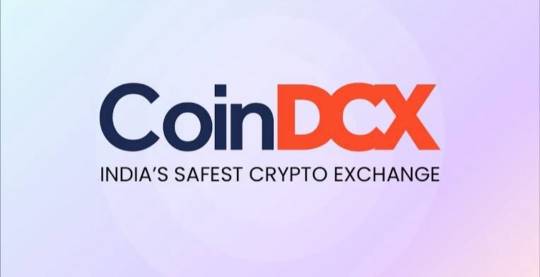
CoinDCX brings $135 million up in financing as valuation pairs to $2.15 billion
Crypto exchanging trade CoinDCX has raised $135.9 million (about Rs 1,000 crore) from financial backers drove by Pantera Capital and Steadview Capital, multiplying its valuation to $2.15 billion in under a year to turn into the most esteemed crypto exchanging stage India.
The financing comes in the scenery of crypto trades confronting recently presented tax assessment rules in India. CoinDCX and its companions, as WazirX and CoinSwitch Kuber, have seen their volumes fall to new lows this month because of confined admittance to methods of storing cash for clients.
As per the organization, Pantera Capital and Steadview Capital injected about portion of the assets in the most recent round, which likewise saw support from Kingsway Capital, DraperDragon, Republic, and Fellow Ventures.
The round likewise saw existing financial backers B Capital, Coinbase Ventures, Polychain Capital, and Cadenza Capital Administration increment their interests in the crypto trade.
In July 2021, CoinDCX had raised assets from Coinbase Ventures and B Capital at a $1.1 billion valuation, which shot it into the unicorn club of secretly held new businesses esteemed at $1 at least billion.
CoinDCX, established in 2018 by Sumit Gupta and Neeraj Khandelwal, helps individuals trade crypto tokens. It additionally offers other crypto-based monetary items like loaning.
"These financial backers have been basically profound into the crypto space and they have seen it fill in different topographies," Gupta, who is likewise the Chief of CoinDCX, enlightened that talking concerning the proceeded with bullishness of VCs to put resources into trades in spite of the vulnerabilities.
"High-quality investors don't consider volume to decide how quick the business is developing, they take a bet on who is building the business in the correct course," he said. "Despite the fact that the volumes are at lower levels than before, in the long haul, it doesn't exactly make any difference. What is important is the way we are making crypto mainstream..."
The exchanging trade will utilize the assets to build its headcount to north of 1,000 toward the finish of the following year from 400 at this point. It intends to employ across capacities, including designing, item and consistence.
Gupta said the organization will put resources into schooling and fabricate an advancement community to foster items in the web3 space. The organization likewise has a corporate endeavor arm, DCX Adventure, which has moved different new businesses in the web3 space, including Ethereum Message pop-up Assistance most as of late.
CoinDCX's client base has developed to 12 million enrolled clients from 3.5 million in August last year.
Approaching vulnerability
Throughout the course of recent weeks, the National Payment Corporation of India (NPCI) has limited any association with crypto trades, while portable payment wallet Mobikwik has removed admittance to clients.
On April 12, the volumes on numerous crypto trades hit a six-month low.
"Brought together Payments Connection point (UPI) isn't accessible… yet it is the simplest way for individuals to store cash to make crypto exchanges... We are making a respectable attempt to bring back UPI access," Gupta said. " We are occupied with conversations with the NPCI and applicable partners on understanding the difficulties and how we can settle them," he said.
In Spring, the business had made a portrayal to the money service to consider lessening the proposed 1% assessment deducted at source to 0.01%, saying it would probably clear out a heft of exchanging volumes on the trades.
"A lower TDS limit is certainly significant on the grounds that then individuals can really exchange without stressing over the capital being locked," he said. " So clearly that will be a major lift to the exchanging incomes and furthermore incomes for the public authority. However, at this point, I believe there's actually time till June for ourselves and conversations are happening..."
CoinDCX will likewise put vigorously in training drives, including building more vernacular substance and scaling the DCXLearn stage. It as of late banded together with crypto-local exchange observation and market trustworthiness organizations, for example, Solidus Labs and Coinfirm to reinforce its enemy of illegal tax avoidance assurance and to give exact and all encompassing discovery and revealing into dubious exercises.
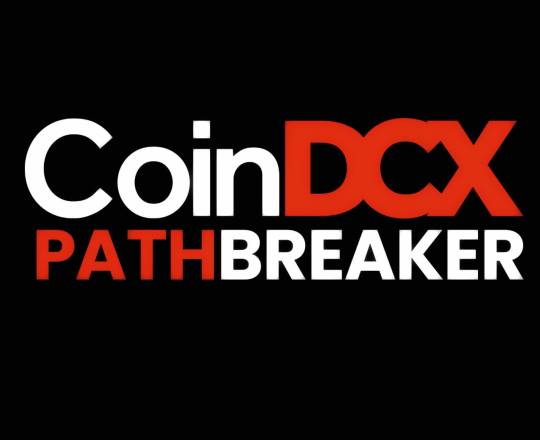
#CoinDCXPathbreaker
6 notes
·
View notes
Text

CoinDCX brings $135 million up in financing as valuation pairs to $2.15 billion
Crypto exchanging trade CoinDCX has raised $135.9 million (about Rs 1,000 crore) from financial backers drove by Pantera Capital and Steadview Capital, multiplying its valuation to $2.15 billion in under a year to turn into the most esteemed crypto exchanging stage India.
The financing comes in the scenery of crypto trades confronting recently presented tax assessment rules in India. CoinDCX and its companions, as WazirX and CoinSwitch Kuber, have seen their volumes fall to new lows this month because of confined admittance to methods of storing cash for clients.
As per the organization, Pantera Capital and Steadview Capital injected about portion of the assets in the most recent round, which likewise saw support from Kingsway Capital, DraperDragon, Republic, and Fellow Ventures.
The round likewise saw existing financial backers B Capital, Coinbase Ventures, Polychain Capital, and Cadenza Capital Administration increment their interests in the crypto trade.
In July 2021, CoinDCX had raised assets from Coinbase Ventures and B Capital at a $1.1 billion valuation, which shot it into the unicorn club of secretly held new businesses esteemed at $1 at least billion.
CoinDCX, established in 2018 by Sumit Gupta and Neeraj Khandelwal, helps individuals trade crypto tokens. It additionally offers other crypto-based monetary items like loaning.
"These financial backers have been basically profound into the crypto space and they have seen it fill in different topographies," Gupta, who is likewise the Chief of CoinDCX, enlightened that talking concerning the proceeded with bullishness of VCs to put resources into trades in spite of the vulnerabilities.
"High-quality investors don't consider volume to decide how quick the business is developing, they take a bet on who is building the business in the correct course," he said. "Despite the fact that the volumes are at lower levels than before, in the long haul, it doesn't exactly make any difference. What is important is the way we are making crypto mainstream..."
The exchanging trade will utilize the assets to build its headcount to north of 1,000 toward the finish of the following year from 400 at this point. It intends to employ across capacities, including designing, item and consistence.
Gupta said the organization will put resources into schooling and fabricate an advancement community to foster items in the web3 space. The organization likewise has a corporate endeavor arm, DCX Adventure, which has moved different new businesses in the web3 space, including Ethereum Message pop-up Assistance most as of late.
CoinDCX's client base has developed to 12 million enrolled clients from 3.5 million in August last year.
Approaching vulnerability
Throughout the course of recent weeks, the National Payment Corporation of India (NPCI) has limited any association with crypto trades, while portable payment wallet Mobikwik has removed admittance to clients.
On April 12, the volumes on numerous crypto trades hit a six-month low.
"Brought together Payments Connection point (UPI) isn't accessible… yet it is the simplest way for individuals to store cash to make crypto exchanges... We are making a respectable attempt to bring back UPI access," Gupta said. " We are occupied with conversations with the NPCI and applicable partners on understanding the difficulties and how we can settle them," he said.
In Spring, the business had made a portrayal to the money service to consider lessening the proposed 1% assessment deducted at source to 0.01%, saying it would probably clear out a heft of exchanging volumes on the trades.
"A lower TDS limit is certainly significant on the grounds that then individuals can really exchange without stressing over the capital being locked," he said. " So clearly that will be a major lift to the exchanging incomes and furthermore incomes for the public authority. However, at this point, I believe there's actually time till June for ourselves and conversations are happening..."
CoinDCX will likewise put vigorously in training drives, including building more vernacular substance and scaling the DCXLearn stage. It as of late banded together with crypto-local exchange observation and market trustworthiness organizations, for example, Solidus Labs and Coinfirm to reinforce its enemy of illegal tax avoidance assurance and to give exact and all encompassing discovery and revealing into dubious exercises.

#CoinDCXPathbreaker
6 notes
·
View notes
Text
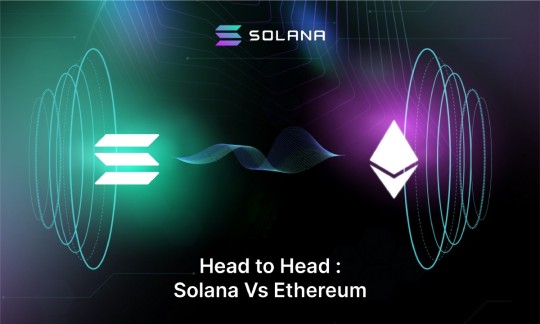
Solana versus Ethereum: The Battle for L1 Dominance
The battle of Layer 1 chains has been seething on starting around 2020, around mid-Summer. Before the 2021 bull run, with L1 chains, Ethereum was undoubtedly the behemoth of decentralized finance (DeFi). It appeared to be legit, since it has first-mover advantage.
In any case, the times, they are a-changin'.
What's more, it isn't always great to be the first. It's obvious, Ethereum's architecture has been squeaking under the a huge number of dApps built on top of it. In the Ethereum white paper, Vitalik laid out what's currently commonly known as the blockchain trilemma. Basically: You can have speed, scalability, and security, yet not all three on the double. This is the problem that we've been attempting to resolve with all the different L1 blockchains.
Also, quite possibly the most advertised competitors of them all is probably Solana. Certainly, Solana is the new youngster on the blockchain. Be that as it may, notwithstanding being only a child, it's drawn in a swarm of pitchfork-holding skeptics and smart-cash following VC lovin' financial backers as well. However, let's disregard cost development briefly. All things being equal, we should investigate and endeavor to figure out which one is the better blockchain.
Shall we?
Solana versus Ethereum: A Breakdown
Fresher always means worse. As a matter of fact, Ethereum's development implies that's had opportunity and willpower to go live with large number of decentralized applications (dApps). Large numbers of these dApps have propelled similar ventures on different chains too.
Consensus mechanism
The consensus components for Solana and Ethereum couldn't be any more unique. Bitcoin and Ethereum both utilize Proof-of-Work (PoW). That is all fine and really great for a transactional network like Bitcoin, yet that isn't the very thing that Ethereum is.
Ethereum's Proof-of-Work consensus depends on a closeout model, so clients contend by offering to have their exchange included in the following block. During seasons of network blockage, you can envision the terrible offering situations this model can make. Also, crazy gas expenses on Ethereum can hurt exchange volume. Consolidate this with its PoW consensus system. This involves endlessly mining is energy-concentrated. That is the reason, with Eth2.0, the network is progressing to Proof-of-Stake (PoS), purportedly in a couple of months' time.
For what reason is PoS believed to be preferable over PoW?
Well, for one's purposes, it's less energy-concentrated. Obviously, rather than running specialized equipment hardware, validators for PoS consensus need to have a specific least measure of local tokens staked in the chain. How much ETH you have staked in the network guarantees that you won't act against your own advantage. The thinking is that you wouldn't go about as a malicious entertainer to think twice about same network you're put resources into. In return, you're compensated for helping secure the network.
Solana already utilizes PoS, coincidentally. Furthermore, it consolidates it with this inventive little system called Proof-of-History (PoH). We'll get more into PoH below, when we examine scalability. For the present, realize that both SOL and ETH can be staked on their separate networks. Be that as it may, for Solana, joining two consensus components makes its network highly performant. So what's the significance here when a client executes on the blockchain? Well, it feels like what's to come. It's quick. (Like, bullet-train, this-doesn't-feel-like-a-blockchain quick.) And I could go on and on all day about exchange costs. An exchange charge on Solana is peanuts.
Interlude
To the extent that personal times go, Ethereum benefits from being an OG blockchain, having had lots of technical crimps resolved in its early days. While the network can get blocked now and again, it never goes down, because of being significantly more decentralized than most chains. As a matter of fact, it's important for the explanation Ethereum struggles with scaling. The undertaking still needs a typical crypto client to have the option to run an Ethereum hub on normal equipment. Vitalik clearly tended to the limitations of its L1 network in the Ethereum white paper.
Solana, then again, is clearly still experiencing developing agonies. Until now, the chain has experienced several free times since its launch. It merits looking a piece closer at these episodes.
All the closures seem to have been brought about by a Distributed Denial-of-Service (DDOS) Assault. A DDOS assault happens when a malicious entertainer goes after a network determined to overwhelm it. In two of the cases, the assailant seems to have intentionally designated the network. The result? Solana was closed down for several hours, subverting trust in our financial backers (They could not help yet frown in calm despondency).
Another closure was not the result of an immediate assault. All things being equal, during an Initial DEX Offering, multitudes of bots seem to have overloaded the network. The network reportedly topped at 400,000 transactions per second (TPS) when of the accident. I didn't have the foggiest idea what to be more dazzled by when I originally read this. Indeed, the accident raised a couple of alarm bells, and all the headlines zeroed in on the Solana crash. Still. I feel like the papers should have highlighted the way that Solana had the option to handle up to 400,000 TPS.
Transaction Speed
With regards to exchange speed, Solana takes the cake. Truth be told, with regards to the handling of transactions as well, Solana is one of the quickest blockchains in the game. This obviously has to do with the network architectures. It couldn't be any more obvious, Ethereum focused on decentralization, while Solana zeroed in on throughput. Let's investigate the numbers.
As of now, Ethereum can oversee up to 30 TPS. Contrast this and Solana, which can process more than 50,000 TPS, without chance of crashing. Need to perceive how this stacks facing Visa? 65,000 TPS, so the numbers are becoming comparable. Not intrigued? Think timescale. Visa has been operational for quite a long time. Blockchains, conversely, are an incipient technology. Furthermore, things are only warming up.
Finally, think these numbers are noteworthy?
Then, at that point, envision my face when Ethereum reported that it would have the option to process 100,000 TPS post-blend. No friggin way, I thought. Ethereum's only been around a handful of years. It's actually decentralized. Also, it's claiming it'll have the option to deal with many thousands additional transactions per second than Visa?
Programming Language
The fundamental programming languages used to develop on Solana are Rust C and C++. Conversely, Solidity is the primary programming language for the Ethereum blockchain. Here is a breakdown of Solidity versus Rust, in a nutshell.
Most importantly, Ethereum is the most popular blockchain platform for DeFi and NFTs. Numerous DeFi dApps have been built on Ethereum first (i.e., with Solidity). Because of Ethereum's popularity, numerous other L1 blockchains have needed to emulate this accomplishment by allowing developers to simply port over their Solidity-based smart contracts. Specifically, there are various Ethereum Virtual Machine (EVM)- compatible blockchains, beyond Ethereum itself, which work with Solidity code. These include popular chains like Fantom Opera, Avalanche Contract Chain (C-Chain), and Binance Smart Chain (BSC). So if you have any desire to take a stab at learning a smart contract language, Solidity is a solid wagered. What also helped my thought was that I was already familiar with web languages like Javascript. Assuming you are as well, you'll waste no time with Solidity.
Let's contrast this with Rust real speedy, which currently has less blockchain-explicit applications. In any case, a couple central issues work for Rust:
1. It's anything but a language limited to smart contracts. Rust is utilized in many off-chain applications, including finance. There are more Rust developers out there in the world than Solidity developers.
2. Rust is acquiring popularity. It's currently utilized by new L1 chains that have picked up huge loads of quick speed recently. Notwithstanding Solana, a couple examples are Close and Land.
Remember, however, that it will take you longer to learn Rust. This is on the grounds that you'll be expected to familiarize yourself with the Rust sentence structure first. Solidity grammar is super essential.
Scalability
With regards to scalability, the fundamental issue with Ethereum is that PoW requires some investment and energy to confirm. Specifically, all hubs are expected to shape a consensus to confirm the current situation with the blockchain. Contrast this with Solana, which is a stateless chain.
Solana can bear to be stateless because of its PoH consensus. PoH involves timestamping the transactions, which guarantees that the transactions are confirmed in sequential request. Furthermore, what occurs assuming that they're in arrangement? You can get rid of consensus check of the current state. In addition, you can also get rid of the mempool. That is the name for the impermanent space for blocks that are anticipating validation for example it's similar to a limbo for blocks.
Getting rid of these capacities allows Solana to scale considerably more lightly and easily. Gracious, and Solana needn't bother with any Layer 2 solutions by the same token. It simply works. However, it has one significant vulnerability.
The less number of hubs implies that Solana is far more centralized contrasted with Ethereum. It's ideal to consider decentralization on a scale. Not all decentralization is great, and not all centralization is awful. They have their particular use cases, as well as tradeoffs. One more challenge with Ethereum scalability comes as TVL. Certainly, with regards to advertise capitalization, Ethereum is the clear champ.
Be that as it may, will this stay valid later on?
Other L1 chains have been biting away at Ethereum's portion of the overall industry. That is the reason The Consolidation will make things fascinating. As far as one might be concerned, I'd like to see whether it will actually launch on time this time. Second, what whole new Pandora's crate of problems will it open? This is not yet clear. Another, more genuine worry right now is whether L2 solutions like Polygon will start destroying the TVL of the Ethereum base layer.
Intriguing developments. Intriguing times.
Standoff Results
Solana and Ethereum are the two primary chains to focus on right now. While Solana is already blazing quick, it's still now and again plagued by network free time issues. Ethereum, then again, has been moving ahead for awhile, yet is beginning to reveal how old it very well may be. All eyes are on The Union, however, and whether it can successfully modernize and scale.
#CoinDCXPathbreaker
4 notes
·
View notes